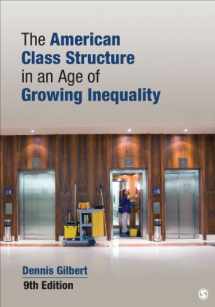
The American Class Structure in an Age of Growing Inequality
Book details
Summary
Description
Like its predecessors, the Ninth Edition of Dennis Gilbert’s The American Class Structure in an Age of Growing Inequality, focuses on the socioeconomic core of the American class system. Drawing on classic and contemporary studies, Gilbert describes our class structure and shows how class affects our everyday lives, from the way we raise our children to the way we vote. The major theme running through the book is the increasing inequality in American society. Gilbert describes the shift in the mid-1970s from an "Age of Shared Prosperity" to an "Age of Growing Inequality." Using the most recent wage, income, and wealth statistics, and accounts of the shifting balance of class power in national politics, the author traces the widening disparities between the privileged classes and average Americans. He repeatedly returns to the question, "Why is this happening?" A variety of economic, political, and social factors are examined, and the competing explanations of influential writers are critically assessed, concluding with the author’s synthesis of the book’s lessons about the power of class and the forces behind growing inequality.


We would LOVE it if you could help us and other readers by reviewing the book
Book review



